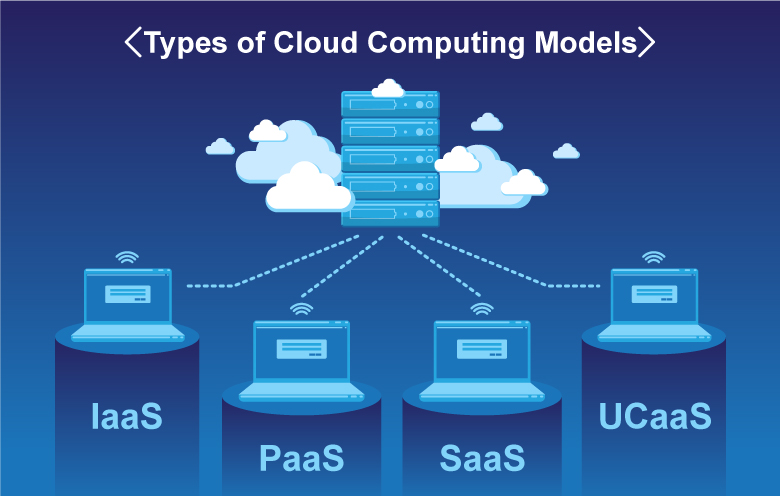Elevate Your Business with LinkDaddy Cloud Services: Unleashing Universal Cloud Service Potential
Elevate Your Business with LinkDaddy Cloud Services: Unleashing Universal Cloud Service Potential
Blog Article
Simplify Your Framework With Cloud Provider
As companies browse the ever-evolving landscape of technology and information monitoring, the function of cloud solutions in simplifying framework has actually come to be significantly prominent. Exactly how can businesses properly navigate this shift and absolutely open the capacity of cloud services for simplifying their infrastructure?
Advantages of Cloud Provider
Cloud services supply a structured method to managing IT framework, offering services with adaptability, cost-efficiency, and scalability. One of the essential advantages of cloud services is the scalability they supply.
Additionally, cloud solutions get rid of the demand for businesses to buy pricey hardware and software. This cost-efficiency is a considerable benefit, especially for little to medium-sized business aiming to lessen ahead of time prices. By utilizing cloud solutions, companies can access premium IT resources without the hefty cost related to traditional facilities arrangements.
Furthermore, cloud services offer organizations with the flexibility to access their information and applications from anywhere with a net link. This degree of ease of access boosts partnership among groups, makes it possible for remote work, and raises general productivity. The versatility offered by cloud solutions encourages companies to adapt swiftly to changing market conditions and client demands.
Expense Savings and Scalability
In addition to the functional advantages highlighted previously, the assimilation of cloud services into a company's infrastructure comes up with significant cost financial savings and boosted scalability. Cloud solutions provide a pay-as-you-go design, allowing companies to range resources up or down based upon present requirements, thereby preventing the costs related to preserving excess capability. This versatility allows companies to adjust rapidly to fluctuating needs without incurring unnecessary expenses.
In addition, cloud solutions eliminate the requirement for in advance financial investments in software and hardware, lowering funding expenditures. Operating costs are additionally minimized as business no more require to take care of and maintain physical servers, causing lower energy intake and IT staffing costs. Additionally, cloud services provide automatic updates and maintenance, making certain that the infrastructure continues to be safe and secure and updated without requiring hands-on treatments.
Enhanced Security Procedures
Implementing rigid protection steps is paramount when incorporating cloud services into a firm's framework to protect sensitive information and make sure compliance with sector regulations. Cloud service carriers offer boosted safety attributes such as data encryption, firewall security, and multi-factor authentication to minimize cybersecurity threats.
Furthermore, routine security audits and compliance evaluations help guarantee and identify susceptabilities adherence to sector check requirements. Companies can likewise take advantage of features like automated protection updates and real-time risk tracking supplied by cloud provider. By focusing on safety measures and staying proactive in addressing potential dangers, services can with confidence utilize cloud services while securing their valuable information from unapproved accessibility or breaches.
Transitioning to Cloud Facilities
To efficiently integrate cloud services into a company's facilities, an organized method that resolves the shift in the direction of cloud-based remedies is imperative. Transitioning to shadow framework involves cautious preparation and implementation to make certain a smooth migration process - Cloud Services.
When the assessment is full, a migration strategy ought to be established. This strategy ought to detail the timeline, resources, and duties for relocating each element to the cloud. It is important to communicate this strategy clearly to all stakeholders to ensure placement and decrease interruptions throughout the transition.
Throughout the movement surveillance, testing and process are important to identify and attend to any type of concerns promptly. Regular checkpoints must be developed to track progress and make essential modifications. Furthermore, training for employees on making use of cloud services should be given to guarantee an effective shift and make best use of the advantages of the new infrastructure.
Best Practices for Cloud Fostering
Successful adoption of cloud solutions depends upon the calculated placement of service objectives with technological capabilities and organizational preparedness. To guarantee a smooth change to the cloud, companies must begin by carrying out an extensive analysis of their current infrastructure and recognizing which workloads are best fit for cloud movement. It is essential to involve key stakeholders from different divisions in the decision-making process to acquire buy-in and address any worries beforehand.
Another finest technique for cloud adoption is to prioritize security and conformity. Organizations must very carefully assess the safety measures offered by cloud service companies and guarantee that their data is safeguarded according to market standards and browse this site governing demands. Executing durable data file encryption, gain access to controls, and routine safety audits can assist reduce threats connected with cloud adoption.

Verdict

As organizations browse the ever-evolving landscape of innovation and data administration, the duty of cloud solutions in simplifying infrastructure has become progressively prominent - Cloud Services. Exactly how can organizations effectively navigate this transition and genuinely open the potential of cloud solutions for streamlining their facilities?
Cloud solutions offer a structured method to handling IT facilities, providing companies with flexibility, cost-efficiency, and scalability. By utilizing cloud solutions, companies can access top quality IT sources without the large cost tag connected with traditional framework configurations.
To guarantee a smooth transition to the cloud, companies need to start her latest blog by performing a detailed evaluation of their present infrastructure and determining which work are best suited for cloud migration.
Report this page